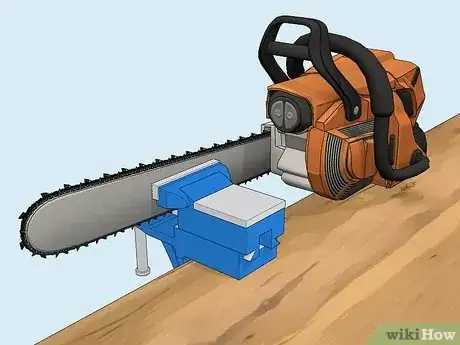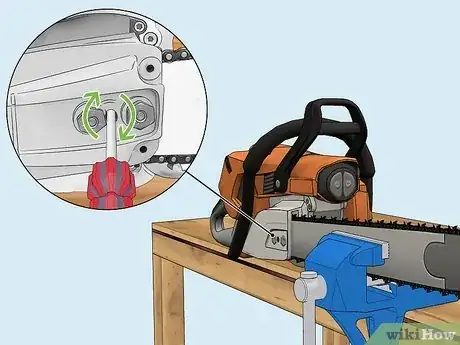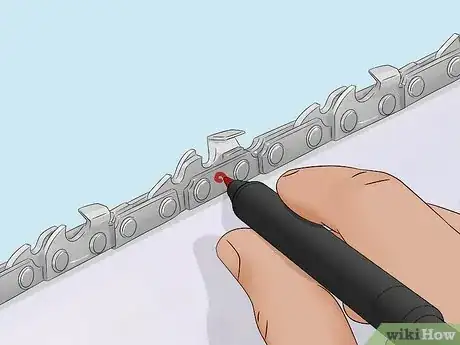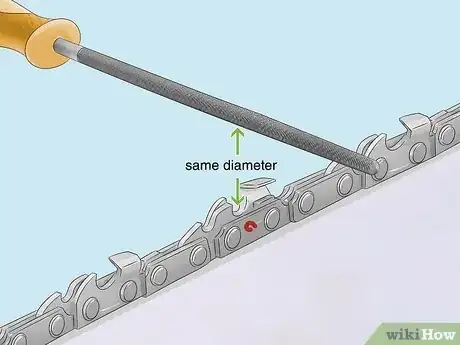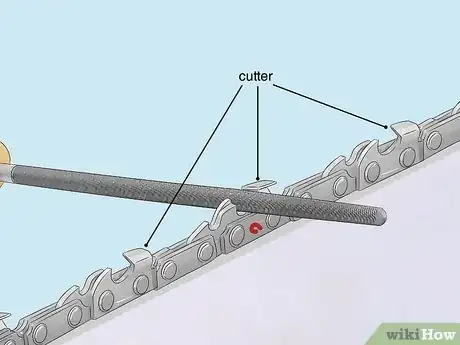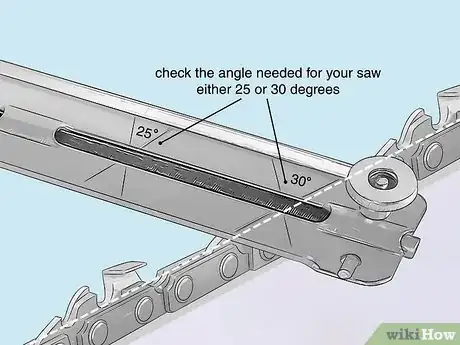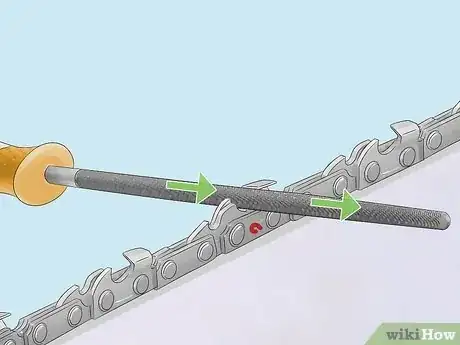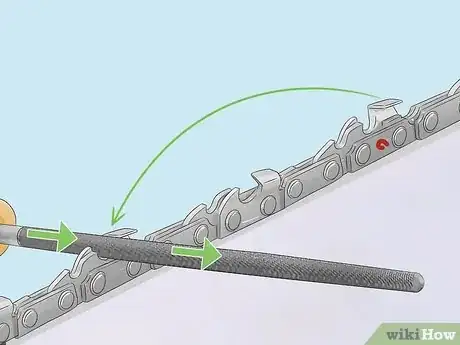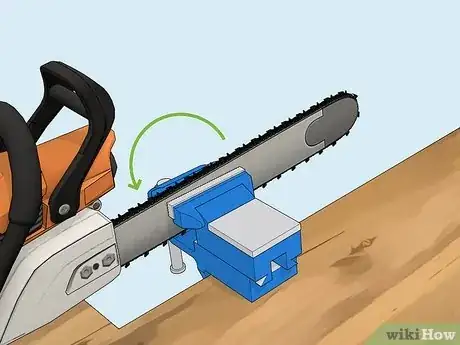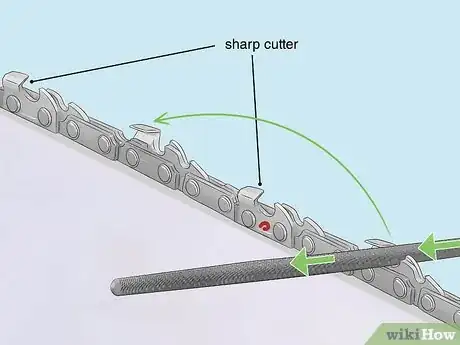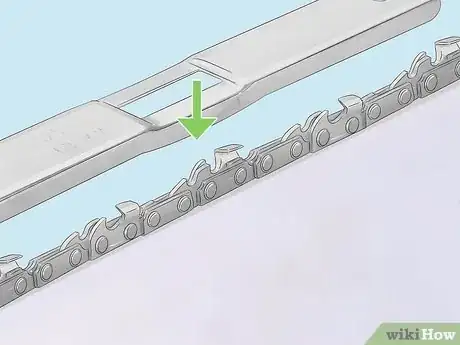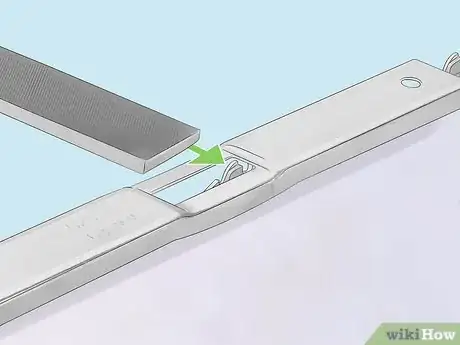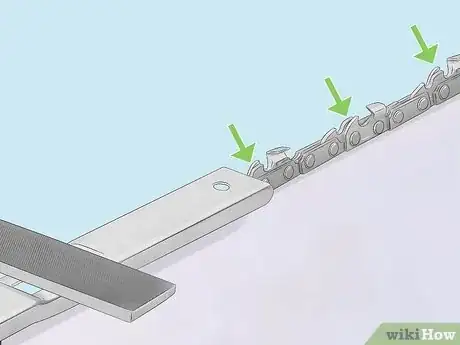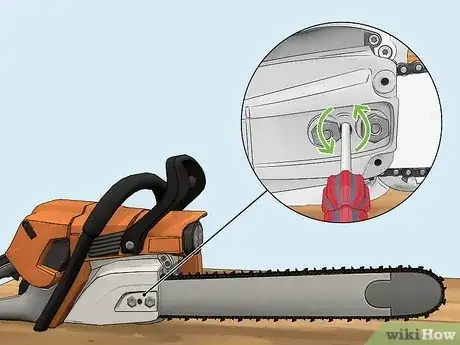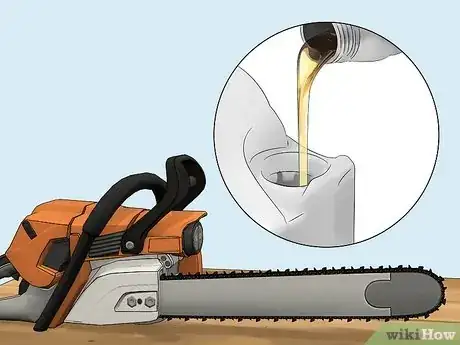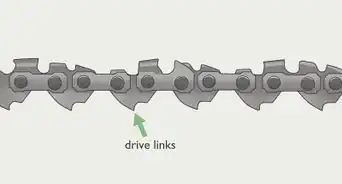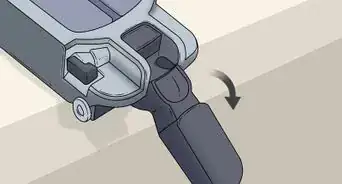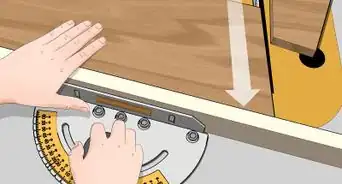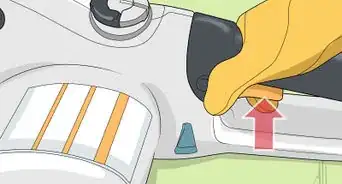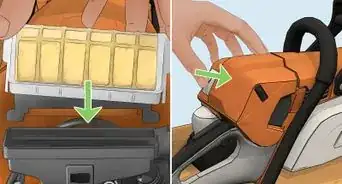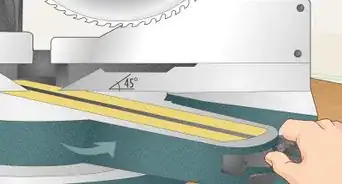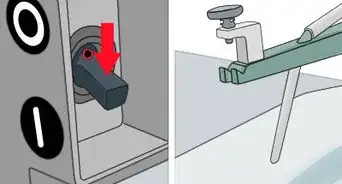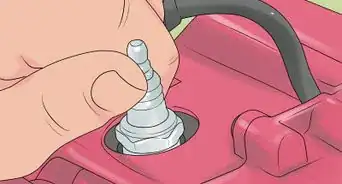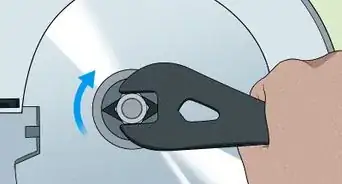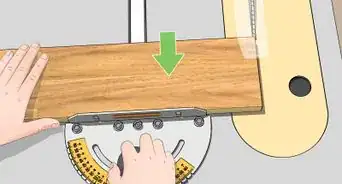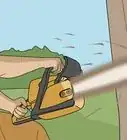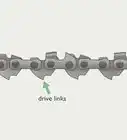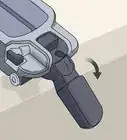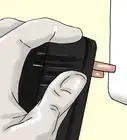This article was co-authored by Abraham Schwartz and by wikiHow staff writer, Luke Smith, MFA. Abraham Schwartz is a handyman and the owner of Fixin’ To Do, a home improvement service in Austin, Texas. Abraham specializes in both small to medium residential and commercial sized jobs, ranging from TV mounting to furniture assembly to home automation setup. Prior to starting Fixin’ To Do, Abraham worked for over 10 years as a handyman for third party services and had a lifetime of learning how to improve houses. He holds both his TSBPE Plumbing Examiners and Electrical Apprentice (TX) Licenses. In 2018 and 2019, Fixin’ To do was rated as a Top Pro by Thumbtack.
There are 13 references cited in this article, which can be found at the bottom of the page.
wikiHow marks an article as reader-approved once it receives enough positive feedback. This article received 25 testimonials and 100% of readers who voted found it helpful, earning it our reader-approved status.
This article has been viewed 1,367,860 times.
A chainsaw makes quick work of trees and other lumber. Over time, however, you may notice that you struggle to cut with the same ease as before, which indicates a dulled blade in need of sharpening. Luckily, sharpening your chainsaw blade is a simple enough task, and it’ll only be an hour or so until your chainsaw is back in operating condition. We’ll show you how to align your file, use it to sharpen the cutters of the chain, and also how to file down the rakers to ensure a smooth cut every time.
Things you Should Know
- Place the bar of the chainsaw in a tabletop vice, and tighten the tension of the chain so that it doesn’t move around as you work.
- Use a file guide to position a round file at an angle to the cutter, or align the file with the guidelines on the tooth.
- File toward the point of the cutter 3-10 times, or until the cutter is silver, indicating it’s been adequately sharpened.
- Use a depth gauge to measure the height of each raker, and file down any that stick up past the top of the gauge.
Steps
Setting the File
-
1Clamp the bar of the chainsaw to your work surface. Use a tabletop clamp or a vise to hold the chainsaw in place on your work surface. This will prevent the saw from shifting as you sharpen it, and result in a much more consistent and easy sharpening process.[1]
- Securing the chainsaw upside down on your work surface often makes for easier access to the chain. There’s no one right way, so find the method that works best for you.
Note: If you need to sharpen a chainsaw but don’t have a vise or clamp, you can go without it. Be careful to keep the chainsaw steady as you file it if you can’t secure it in place, and wear sturdy gloves as your work.
-
2Tighten the tension-adjusting screw to tighten the chain. Find the tension adjusting screw on your chainsaw—usually on the side of the saw and perpendicular to the direction of the chain. Use a screwdriver to tighten the chain by tightening this screw. Make sure the chain is tight, but is still able to move around the saw with a little effort. This stops the chain from moving as you sharpen it.[2]
Tip: The adjustment screw will be in different places on different chainsaws. Consult your owner’s manual for the chainsaw if you can’t find it.
Advertisement -
3Mark your first tooth with a permanent marker. Select a tooth to sharpen first (most commonly the shortest or smallest tooth) and mark it with a bright permanent marker to easily keep track of where you started and prevent you from sharpening the same section twice. As you use the chainsaw, this mark will disappear.[3]
- If you don’t want to mark your chainsaw, look for a unique link in the chain. It might have no teeth, or already be a different color.
- Alternatively, mark the tooth with a bit of painter’s tape after you’ve filed it.
-
4Select a round file the same diameter as the chainsaw's teeth. Different chainsaws have different sized teeth, and therefore require different sized files to sharpen. Find the size of your saw’s chain in the owner’s manual or online, or read the information occasionally printed on the bar of the chainsaw.[4]
Note: Typical sizes for the chain are 3⁄16 inch (4.8 mm), 5⁄32 inch (4.0 mm), and 7⁄32 inch (5.6 mm) in diameter.
-
5Set your file in the notch on the front of the cutter. The cutter is the angled “tooth” with a flat top, which rips at the wood. Place the tip of the file just inside the notch on the tooth you have marked so that roughly 20% of the file’s diameter is above the top of the tooth.[5]
- The chain has two types of cutters facing alternate directions. Choose one direction of cutter to focus on first before moving onto the other type.
-
6Position your file guide at the factory default angle of the cutter. Check your owner's manual or look online to find the correct angle at which to file each cutter. Position the line on the file holder so that it lines up parallel to the rest of the chain as you file.[6]
- Some chainsaws also have lines etched into the top of each cutter to help guide your file at the appropriate angle. Line your file up so that it is parallel with this etching to set the proper angle.
- The angle for filing is typically 25 or 30 degrees, but some may be flatter. Always check the angle needed for your saw before beginning.
Sharpening the Cutters
-
1Slide the file across the face of the cutter. Hold the file so that it remains level and flat over the top of the chain. In one smooth motion, push the file along the cutter. You don’t need to apply a lot of pressure, only enough so that you feel the file grinding against the cutter. Lift the file out of the cutter and reset it to the same place and at the same angle as it was previously.[7]
Note: Never pull the file backward through the cutter, as this will damage both your file and the cutter itself.[8]
-
2File the cutter 3 to 10 times until it is sharp. Repeat the exact same motion of running the file through the cutter until the cutter is a shiny, silver color and appears sharp. To ensure consistency across the sharpness of each cutter, count how many times you file the first cutter and file each subsequent cutter the same number of times.[9]
- If you’re unsure whether or not the cutter is sharp, feel for a slight burr along the top of the cutter. If this is present, the cutter is adequately sharpened. Run the file over the burr once to knock it away.
- If you notice metal shavings getting caught in the file, simply tap the file on a solid surface to clear it and continue sharpening.
-
3Sharpen every second tooth from the starting point. Once you have fully sharpened your starting tooth, rotate the chain to bring a new tooth closer. The cutters on a chainsaw alternate directions, so sharpen every other cutter using the same motion, at the same angle, the same number of times until it is sharp. Repeat until you get back to the starting mark you made.[10]
These two cutters are referred to as right and left cutters. By alternating them, the chainsaw is more easily able to cut in a straight line without leaning to one side or another. If you file one type of cutter more than another, you risk throwing the balance of the chainsaw off. Make sure you stay consistent across all cutters.[11]
-
4Rotate the chainsaw 180 degrees. Loosen your vise or clamp and rotate the chainsaw 180 degrees, then clamp it again. This grants access to the alternate cutters that you skipped sharpening in the first loop around the chain and means you don’t need to change your stance or method.[12]
Tip: If you can’t easily adjust the position in which the chainsaw is clamped, step around the chainsaw or adjust the position of your file so that it faces the other direction. Regardless, make sure you remain consistent.
-
5Use the same motion to sharpen every other tooth. File your way around the chain again, sharpening each tooth that has not yet been sharpened. Make sure to use the same amount of pressure and run the file through the same amount of times in order to keep each cutter consistent and level.[13]
Filing the Rakers
-
1Place a depth gauge over the chain and check the rakers. A depth gauge is a tool used to ensure that the rakers are at the proper height. Set the depth gauge over the chain near your starting point so that the “wings” face downward, and push it forward until it catches against a raker. This indicates the raker needs to be filed down.[14]
The rakers are the bumps along the chain in between each cutter. They function to keep the depth of the cut consistent as the chain spins around the saw, so making sure each is level is very important.[15]
-
2Use a flat file to level the raker to the gauge. Holding the depth gauge in place, run a flat file over the top of the raker until it is level with the depth gauge. While the depth gauge will protect other teeth from being filed, there is nothing to stop the gauge itself from being filed down. Use sparing pressure, and be careful not to file away the gauge, as this can lead to inconsistencies between rakers.[16]
- To entirely avoid filing the gauge, slide it back while you file over the raker. Check the height of the raker consistently as you file until it lines up with the top of the depth gauge.
- Once you have filed the raker down, it might have a square top. Use the flat file to very slightly smooth off the edges without filing down the height of the raker any further.
- Unlike the round file, the flat file doesn’t need to be any specific size.
-
3File every raker down to the top of the depth gauge. Continue the same process of checking rakers with a depth gauge and filing them down all the way around the rest of the chain. Unlike the cutters, you don’t need to worry about filing the same raker twice as you are filing the rakers down.[17]
Tip: As with the round file, if you notice any metal shavings getting caught up in the flat file, tap it on a surface once or twice to loosen them before continuing to file.
-
4Loosen the chain and release the chainsaw. Use the adjustment screws to loosen the chain back to a usable tension.[18] Loosen the clamp or vise holding the chainsaw in place and take the chainsaw out. Your chainsaw is now be sharpened evenly and ready to use.
- A chain at a usable tension has very little visible slack as you hold it. When you lift the chain up, it should have around 1⁄8 inch (3.2 mm) of give and snap back when released.
-
5Refill the bar oil reservoir in your chainsaw, and clean the saw. Turn your chainsaw on its side to reveal the cap for the oil reservoir. Unscrew the cap and use a funnel to pour in bar and chain oil. Replace the cap and secure it tightly. After, clean your chainsaw to remove any filing debris before you operate it.[19]
- As a rule of thumb, sharpen your chainsaw every time you refill the oil—and refill the oil every time you refill the gas tank!
Tip: Vegetable oil, such as canola oil, can be used in place of bar and chain oil. This is biodegradable and therefore more environmentally friendly.[20]
Community Q&A
-
QuestionIf the chain is not OEM and you're not sure of the size of tooth, how can you determine the proper file size?
 wikiHow Staff EditorThis answer was written by one of our trained team of researchers who validated it for accuracy and comprehensiveness.
wikiHow Staff EditorThis answer was written by one of our trained team of researchers who validated it for accuracy and comprehensiveness.
Staff Answer wikiHow Staff EditorStaff AnswerCheck the packaging of the chain for specifications, or consult the chain manufacturer's website. If you're not sure of the brand, it's best to buy a new chain with listed specifications to be sure.
wikiHow Staff EditorStaff AnswerCheck the packaging of the chain for specifications, or consult the chain manufacturer's website. If you're not sure of the brand, it's best to buy a new chain with listed specifications to be sure. -
QuestionHow do you determine which size of bastard file to use just by looking at chain?
 wikiHow Staff EditorThis answer was written by one of our trained team of researchers who validated it for accuracy and comprehensiveness.
wikiHow Staff EditorThis answer was written by one of our trained team of researchers who validated it for accuracy and comprehensiveness.
Staff Answer wikiHow Staff EditorStaff AnswerIt's hard to gauge a file just by looking at the chain, since the differences can be minute but crucial. It's best to consult your owner's manual.
wikiHow Staff EditorStaff AnswerIt's hard to gauge a file just by looking at the chain, since the differences can be minute but crucial. It's best to consult your owner's manual. -
QuestionI have a Ryobi battery-operated chainsaw that, when I try to cut a straight cut log end tends to cut in an arc. Why is this?
 wikiHow Staff EditorThis answer was written by one of our trained team of researchers who validated it for accuracy and comprehensiveness.
wikiHow Staff EditorThis answer was written by one of our trained team of researchers who validated it for accuracy and comprehensiveness.
Staff Answer wikiHow Staff EditorStaff AnswerThis is usually either because the cutters are dull, or because you've used too much pressure or filed at an improper angle when sharpening the blade. Use a lighter touch, and stay as consistent as possible when filing.
wikiHow Staff EditorStaff AnswerThis is usually either because the cutters are dull, or because you've used too much pressure or filed at an improper angle when sharpening the blade. Use a lighter touch, and stay as consistent as possible when filing.
Warnings
- Never trigger the saw while sharpening the chain. Advance the chain only by hand during the sharpening process. For safety's sake, disconnect the spark plug wire before working on the chain.⧼thumbs_response⧽
- Manufacturers recommend checking and readjusting chains often, especially when first using a new chain (the break-in period).⧼thumbs_response⧽
- New or sharpened chains always deserve careful treatment and use. It is recommended to fully saturate (soak) a new or reconditioned chain in the recommended oil.[21]⧼thumbs_response⧽
- For best results, adjust and file chains when they are cool, as all chains tend to loosen (expand) in the heat of operation, even after the break-in period.[22]⧼thumbs_response⧽
- Do not force the chainsaw file or use too much pressure, which could damage both the file and the cutter.⧼thumbs_response⧽
- Wear gloves and safety glasses/goggles during the sharpening process. You are dealing with extremely sharp edges, and without gloves, you could easily cut yourself.⧼thumbs_response⧽
- Not all chain bars are standard in how they are attached or adjusted. Always check your owner's manual when working on your own chainsaw.⧼thumbs_response⧽
Things You'll Need
- Tabletop clamp
- Chainsaw file (sized according to your chain)
- Flat file
- File guide or gauge
- Depth gauge
- Safety equipment
- Wrench for adjusting your saw bar
- Bar and chain oil
References
- ↑ https://www.youtube.com/watch?v=p50EJIIj1m0&t=30s
- ↑ https://www.youtube.com/watch?v=x2tLWcgNEzA&t=37s
- ↑ https://youtu.be/7CdS4HrNRk4?t=3m31s
- ↑ https://www.angi.com/articles/how-to-sharpen-chainsaw.htm
- ↑ https://www.youtube.com/watch?v=p50EJIIj1m0&t=88s
- ↑ https://www.youtube.com/watch?v=p50EJIIj1m0&t=88s
- ↑ https://woodlandinfo.org/the-right-technique-and-schedule-for-sharpening-a-chainsaw/
- ↑ https://woodlandinfo.org/the-right-technique-and-schedule-for-sharpening-a-chainsaw/
- ↑ https://woodlandinfo.org/the-right-technique-and-schedule-for-sharpening-a-chainsaw/
- ↑ https://www.youtube.com/watch?v=p50EJIIj1m0&t=171s
- ↑ https://woodlandinfo.org/the-right-technique-and-schedule-for-sharpening-a-chainsaw/
- ↑ https://youtu.be/x2tLWcgNEzA?t=99
- ↑ https://youtu.be/x2tLWcgNEzA?t=99
- ↑ https://www.youtube.com/watch?v=x2tLWcgNEzA&t=146s
- ↑ https://woodlandinfo.org/the-right-tools-for-sharpening-a-chainsaw/
- ↑ https://www.youtube.com/watch?v=p50EJIIj1m0&t=229s
- ↑ https://www.youtube.com/watch?v=p50EJIIj1m0&t=229s
- ↑ https://extension.missouri.edu/publications/g1954
- ↑ https://woodlandinfo.org/the-right-technique-and-schedule-for-sharpening-a-chainsaw/
- ↑ https://www.fs.fed.us/eng/pubs/html/98511316/98511316.html
- ↑ https://extension.missouri.edu/publications/g1954
- ↑ https://extension.missouri.edu/publications/g1954
About This Article
To sharpen a dull chainsaw, clamp the bar of the chainsaw to your work station and tighten the chain using the tension adjusting screw to make sure it won't move. Then, use a permanent marker to draw a line on the link where you're going to start filing, and get a specialty chainsaw file that's the same diameter as the chainsaw teeth. To file, hold the file between the teeth at a 30 degree angle, and slide it across the face of the cutter 3-10 times until it is sharp. Sharpen every other tooth until you return to the starting link. For tips on filing the rakers properly, read on!
